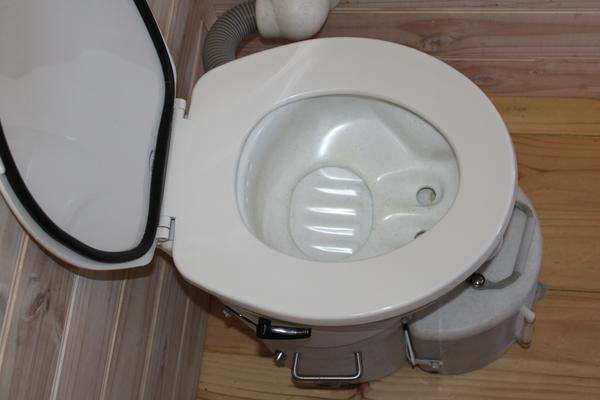Put the words compost and toilet together in a sentence and you're likely to be met with a crinkled nose.
Compost toilet educator Lisa Johnston said that was because most people confused a compost loo with the long drop they used on a farm or at camp during their childhood.
Johnston and her partner Greg Inwood formed the Relieve organisation following the Christchurch earthquakes to provide workshops on how to use, and maintain, compost toilets as an alternative to the city's damaged sewage infrastructure.
"People have had bad experiences with long drops and think composting toilets are the same thing. But actually, a long drop could be vastly improved if all you did was add sawdust. It wouldn't smell or have flies," she said.
READ MORE: *Hamilton single mum says buying tiny house was 'best decision' after break-up *Why we took out a $55K loan to build our own tiny house *22-year-old secures first tiny home despite student loans and no hope for a mortgage *Coping with no water is a nightmare for household with disabilities
The couple has used a bucket-style composting toilet for more than a decade, a set-up which is different to some of the high-tech adaptions available for tiny home owners today.
Tiny houses can be built fully off-grid, or as hybrids with some connections to mains infrastructure and town water.However, many tiny homeowners choose a grey water system with composting toilet to avoid costs associated with connections.
Hamilton single mum Carol Armstrong uses the $1900 Nature's Head dividing toilet which came with the purchase of her 26.5sqm tiny house.
The toilet has separate compartments for ones and twos and a quiet plug-in motor. She empties the urine cannister, which is diluted with half water, once every three days and the poo compost once every three months.
That's with Armstrong, her 11-year-old daughter Caitlin and often a guest using it. "It doesn't gross me out whatsoever and it doesn't smell. But the process is hard work and it's heavy.
The inside of the unit is not detachable, so I've got to uplift the whole thing and tip it into the soil."
Johnston explains that while there are different toilet models, the basic principles of each are the same.
"You do your business, and add sawdust, forest litter, or other home carbon material," she said.

"The aim is to create a carbon balance to the nitrogen in the human waste and aerate it."
Armstrong purchases $3 coir bricks from Bunnings, which make nine litres of soil when hydrated. She empties one into the back of the toilet and uses an external crank handle to aerate the soil.
"By keeping the poo relatively dry, it stops it from going anaerobic and starting to smell," said Matt King, a Relieve member who manages Green Earth sustainable construction consultancy.
"The simpler the system, like buckets, the more you have to manage it."
The pee comes out as a practically sterile and non-hazardous substance, which is easy to empty onto grass or trees, said King. "Generally, liquid has an ammonia smell after 3-4 days, which is when you need to empty."
Johnston believes most tiny homeowners compost their poo on site.
"I would say a lot of people would be continuously adding buckets to a pile, filling up a vessel, closing the lid and leaving it for a year before using it anywhere as compost," she said. King uses a sealed wheelie bin.
After one year, the waste has to be buried at least 30cm under the ground according to the Australian/New Zealand standard. Council guidelines vary.
"I rent on an 11-acre lifestyle block, so I bury it the down the back," said Armstrong.
"The earth is there to receive that waste. It's no different than a cow's".
An expensive system, with large underfloor chamber might not need to be emptied for six to 12 months. But by comparison, King's family of three uses a simple two bucket system and only changes them one or twice a week.
Armstrong chose a compost toilet rather than connecting to sewage for self-sufficiency reasons: "And I don't expect anyone else in the house to maintain it because it was my choice.
"It's a big undertaking, you can't go and not think. Every time I walk in there I look at the level of urine."
There's currently no way composting toilets could replace flushing toilets for the average, full-size homeowner in the suburbs, but advocates are hopeful that will change.
"I'd definitely like to see a future where the average house could have a compost toilet," said King, "we see all the challenges Wellington's going through with their waste water infrastructure and Northland having extreme droughts".
Johnston agreed: "It's ridiculous that we put our poo into water. We've taken two valuable resources and turned it into a problem because we've contaminated the water."
